Did you know that outdoor lighting at night can have a huge negative impact on wildlife? It’s probably not something most of us give any thought to but we should. As I’ve mentioned, it is National Moth Week which means I’ve been staying up late and leaving on lights at my mothing stations, hoping to draw in some interesting insects, including moths. Over the past few nights I have gotten a dizzying variety of cool critters, including some very beautiful and fascinating moths. Besides alerting me to the fact that I share my forest with all of these amazing insects, it has also highlighted what can happen when lights are turned on at night.
I know I’m preaching to the choir, but I need your help. Can you help me spread the word? Lighting at night really does matter as it negatively impacts the lifecycles of many things, including moths. Together we can make a difference. There really are reasons why some communities are trying to bring back the darkness and stop or lessen light pollution.
Here are three reasons to turn off outdoor lights (or put them on a motion sensor so they come on when you need them to):
1. Huge numbers of moths and other nocturnal insects are attracted to the lights. This may not seem like a big deal but consider that these insects should be doing other things. Then consider the sheer number of lights in your neighborhood and in cities all around the country. Every one of those lights is attracting moths and other insects at night, whether or not the owners of those lights knows it.
Remember the large and very beautiful imperial moth, or the very colorful rosy maple moth?
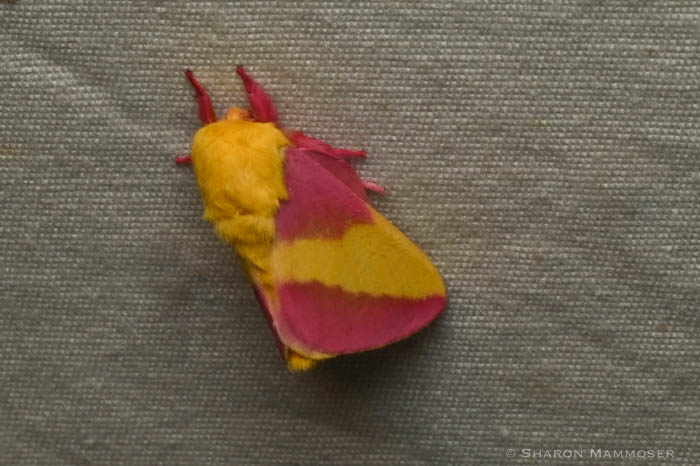
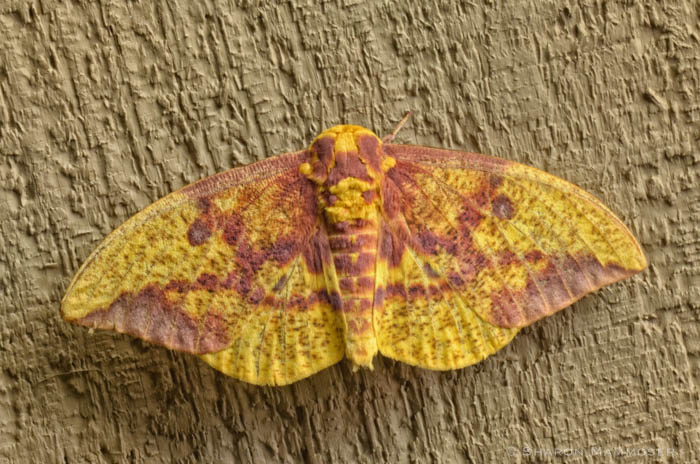
These I had come to my mothing station repeatedly. Well these moths, along with many others, are so influenced by the lights that they are dying before they can find a mate, and if female, lay eggs. These and other moths, who have lived out the rest of their lives out of sight, in their caterpillar stage, nibbling on leaves and growing larger, transform into adults and then instead of searching for mates, are going to the lights and dying. They die as they whirl around the lights, in collisions with structures, as they become disoriented, and because their food reserves run out. So now, instead of using what energy they have left to find a mate, they are using it all up going to the lights. How tragic for so many moths to live out their whole lives, only to die as they reach adulthood, but before they can even find mates. And some may say, “So what if a few moths die?” But what they may fail to understand is that those moths may be pollinating their trees and flowers, those moth caterpillars are feeding their birds. A loss of moth populations can effect other wildlife populations including our beloved songbirds.
2. Predators learn to use the lights for free food. Lights at night create unnatural congregations of insects that might never meet, and for some, this is tragic. At my mothing stations it become obvious very quickly that there were a number of predators who quickly learned that the lights and the sheets equaled food. Spiders and hanging flies (more on this is a future post) come to mind as I saw these examples quickly learn that the lights meant easy prey. In my case, I kindly turned my lights off before morning, giving the critters a chance to disperse and hide before daylight but imagine if my mothing station lights remained on, staying lit until the sunrise. In Ecuador many famous lodges that attract birders from around the world have mothing stations. Except the purpose of their stations is not to look at the moths, but to feed the birds, which in turn attract the birders. Birds, bats, spiders, and other creatures quickly learn that lights mean easy prey. Outdoor lights at night create unnatural congregations of animals.
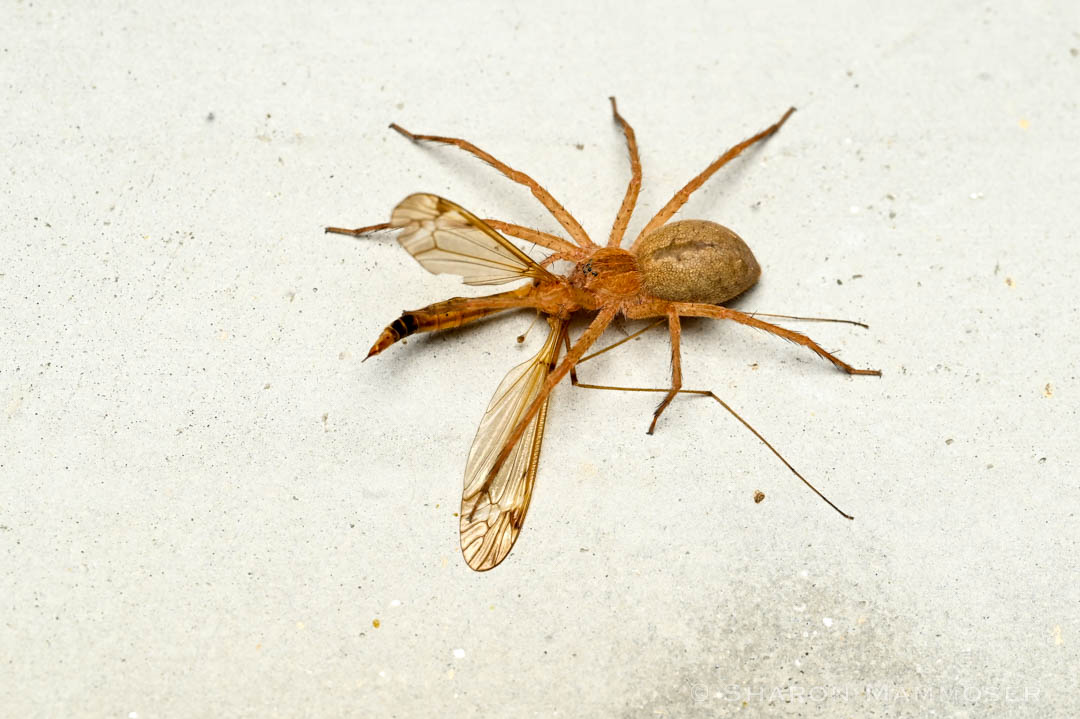
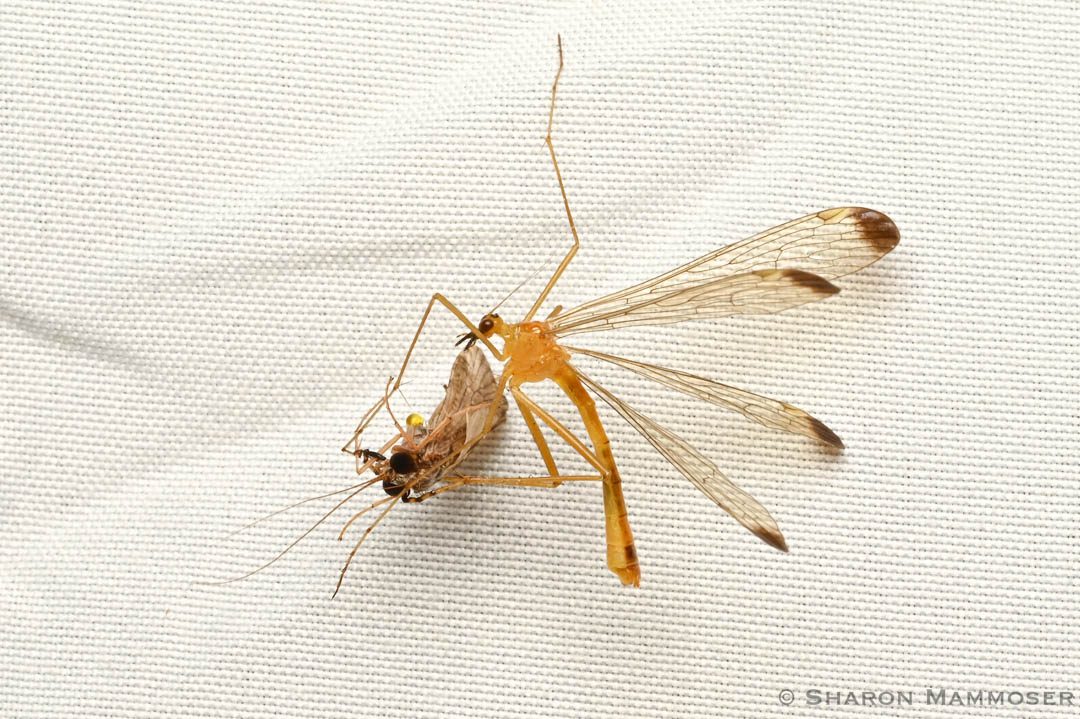
3. Some animals avoid areas with outdoor lighting. This includes some bats which may not seem like a big deal but consider the number of insects, including mosquitoes, bats eat. One of our common little, or big brown bats might eat 1000 mosquito-sized insects in ONE HOUR! Imagine how many they eat in ONE NIGHT! According to Listverse.com, “Not all bat species are significantly impacted, but many species are extremely light-averse, and are repelled by streetlights and other artificial sources. Because insects are attracted to artificial light, which some bat species will not enter, bats lose many opportunities to feed” Do you like mosquitoes? Can’t imagine that most people would say “Yes! I love mosquitoes.” But if you have bright outdoor lights at night, you might have more mosquitoes than areas where darkness exists.

There are many more reasons to turn off outdoor lights but I’m trying to write shorter posts, so I’ll stop here. You can read more about the detrimental effects of light pollution here:
from the International Dark Sky Association
from National Geographic
from Earth Reminder
from ListVerse


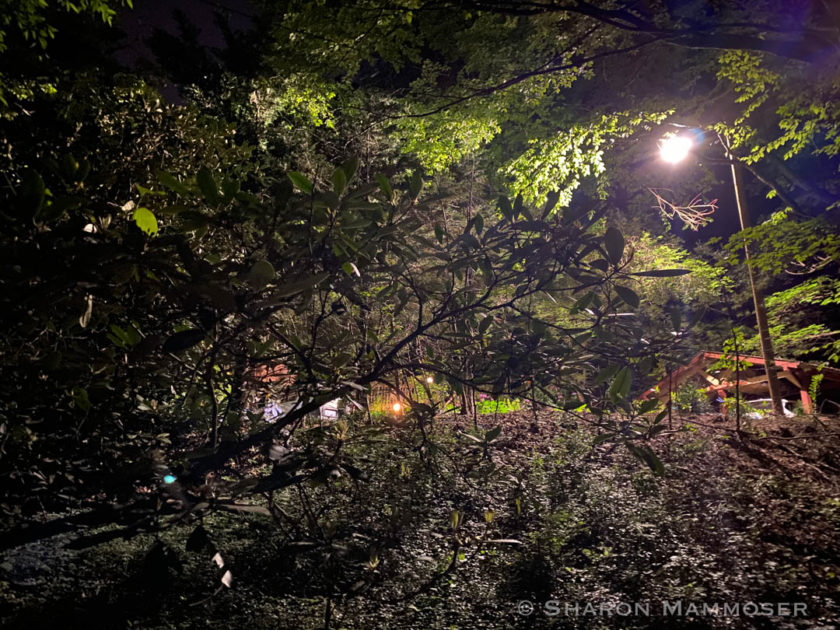
Bravo from the choir!!!
Thank you. I do love the choir!